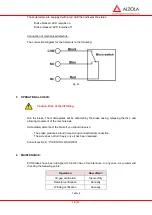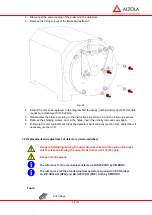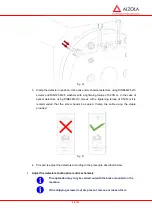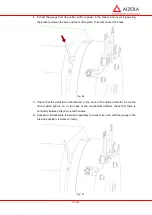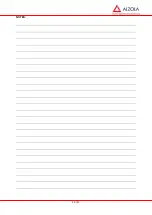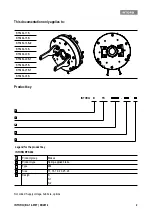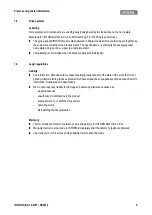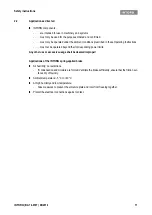
28 / 31
7. If correct operation cannot be achieved, repeat the adjustment process from step 1.
7.3 Replacement of the manual release lever:
1. Extract the lever to be replaced by turning it so that is goes away from the opposite lever.
Fig. 38
Remember that the threading of each lever is in the opposite direction.
2. For assembly of a new lever follow the procedure explained in section 3.7 of the manual.
29 / 31
8 POTENTIAL FAILURES:
Failure
Possible reasons
Solutions
The brake does not work.
Wrong Voltage.
Apply the correct voltage.
Air-gap
too large (disc
deteriorated).
Replace the rotor.
Coil broken.
Replace the brake.
Micro-switch
broken.
Change the
micro-switch
.
Micro-switch
badly adjusted.
Adjust the micro
-switch
.
The brake is slow to react in
the case of an emergency
stop.
The brake is connected to an
alternating current.
Connect to the direct current.
The brake does not release.
Particles stop the casing from
moving.
Replace brake.
The torque is insufficient.
Greasy disc.
Clean disc support and replace
the disc.
The brake is very noisy.
Air-gap
too large.
Replace disc.
The brake gets too hot.
Wrong Voltage.
Apply the correct voltage.
The winding is short-circuited. Replace the brake.
The release lever turns.
Tightening torque is
insufficient.
Tighten (See table 3.1).
Table 7
Summary of Contents for E27 Series
Page 4: ...4 E27 Gearless Installation and maintenance 5323 en 2018 04 c...
Page 15: ......
Page 46: ...30 31 NOTES...
Page 109: ......
Page 110: ......
Page 111: ......




